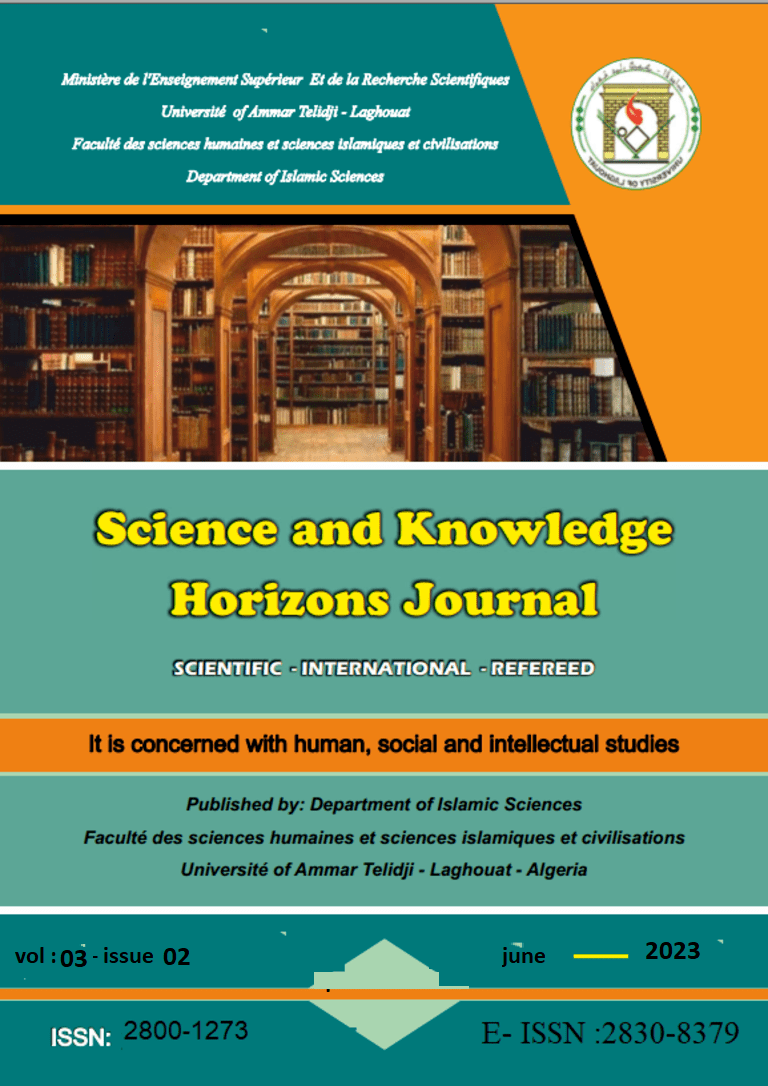Linguistic problems in the Qur'anic dialogue statement, examples of sura al-Aaraf
Abstract
This article aims to trace the characteristics of the Quranic dialogical statement that is mentioned in Surah Al-Araf as a miraculous face in the book of Allah, which some interpreters have referred to as the problem of the Qur'an, so we tried to trace some rhetorical phenomena in the dialogues contained in the surah and analyze them in an attempt to reveal what can constitute understanding for the recipient, and then we have allocated a special section to approach this, which can be a rhetorical linguistic problem, by mentioning the most important basics of the dialogical statement in achieving communication between interlocutors with the benefits of there are many and many lessons that must be considered and worked on during our dialogues and the need to know the Arabic language and their customs in the ways of saying and statement To understand the dialogue statement of the Holy Qur'an and the courses of speech are necessary to remove the problems of understanding and interpretation, as well as arming with the sciences of the Qur'an and language to know the purposes of the speech in order to avoid falling into trouble.
Downloads
References
Al-Maraghi A. B. M. (1985). Interpretation of Al-Maraghi (first edition). Egypt: Mustafa Al-Babi Al-Halabi & Sons Library and Printing Company.
Andalusian m. a. h. (1999). Ocean sea in interpretation (without edition number). Beirut: investigation by Sidqi Muhammad Jamil, Dar Al-Fikr.
Tabari m. B. c. . (2000). Collector's statement in the interpretation of the Qur'an (first edition). Beirut: investigation by Mohamed Shaker, Al-Resala Foundation.
Ibn Ashour m. a. (1984). Editing the correct meaning and enlightening the new mind from the interpretation of the glorious book “Tahrir wa’l-Tanweer” (without a year of printing). Tunisia: The Tunisian Publishing House.
El Shafei m. B. a. . (1940). The Message (first ed.). Egypt: Investigated by Ahmed Shaker, Al-Halabi Library Publications.
Nodman A. M. (2014). The textual structure of the Holy Qur’an between loyalty to the truth and the breadth of meaning, a study in the problematic of metaphor for Badi’ al-Zaman Nursi. Al-Noor Journal for Civilization and Intellectual Studies, 7-36.
Zamakhshari c. a. (1986). Scouting the facts of the mysteries of downloading and the eyes of sayings in the faces of interpretation (first edition). Beirut: Arab Book House.
Al-Razi F. a. (1999). Keys to the Unseen or the Great Interpretation (Third Edition). Beirut: Arab Heritage Revival House.

This work is licensed under a Creative Commons Attribution-NonCommercial 4.0 International License.






